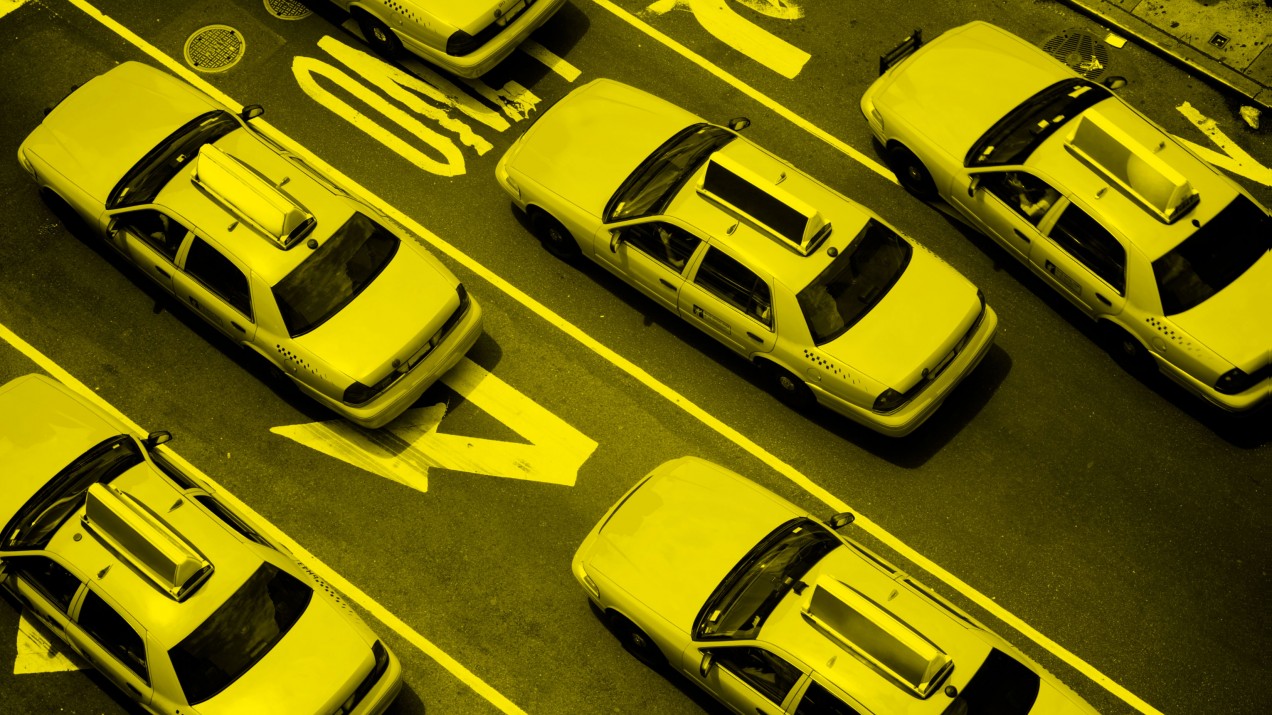

Data by taxi
Sensors on just 10 taxis collect a surprising amount of data in a day.

Taxis rove the streets of the world’s largest cities around the clock. Equipping them with inexpensive sensors could let researchers measure such things as air pollution, weather, traffic patterns, and road quality.
To find out how many taxis it would take to cover a city, a team of researchers from MIT’s Senseable City Lab and Cornell analyzed traffic data from nine major cities on three continents. They found that in one day, just 10 taxis typically cover one-third of Manhattan’s streets—and about 30 can cover half the borough. But because routes tend to converge, over 1,000 taxis are required to cover 85% of Manhattan in a day.
“The sensing power of taxis is unexpectedly large,” says Kevin O’Keeffe, a postdoc at the Senseable City Lab and coauthor of a paper on the study. However, the law of diminishing returns applies. “You get the first one-third of streets almost free, with 10 random taxis,” he says. “Then it gets progressively harder.”
The pattern was not a function of Manhattan’s grid layout. The researchers observed a similar numerical relationship in Chicago, San Francisco, Vienna, Beijing, Shanghai, Singapore, and other cities.
“Urban environmental sensing is crucial for human health,” says study coauthor Carlo Ratti, director of the Senseable City Lab. He calls the results “incredibly surprising, in terms of how well we can cover a large city with just a few moving probes.” A relatively small number of supplemental vehicles could gather data where taxis rarely venture, the researchers say.